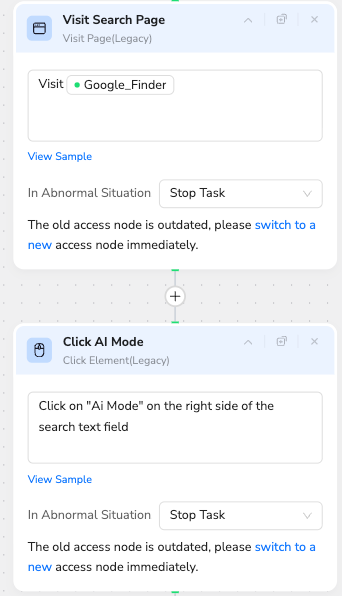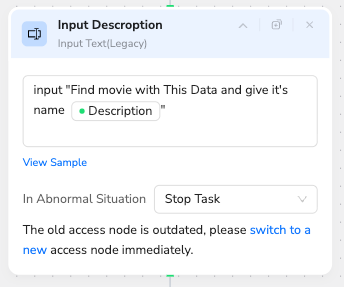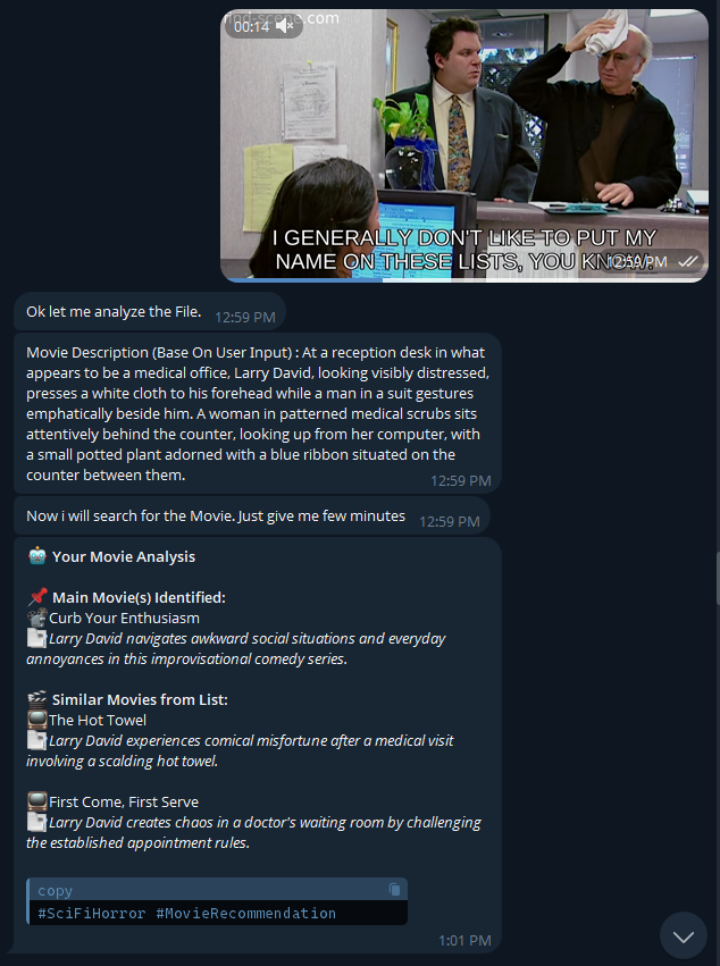
AI Film Finder Bot: Smart Scene & Concept Identification
🎯 Core Function: Advanced Movie Discovery via Text or Image
This workflow is a "Reverse Image Search" and "Concept Search" engine for movies. It allows users to describe a vague plot, a specific scene, or even upload a screenshot/clip to Telegram. The system then uses Gemini AI to decode the input into a precise search query, leverages BrowserAct to cross-reference multiple film databases (Google & Film Finder), and returns a definitive movie match along with similar recommendations, all formatted for Telegram.
Part 1: BrowserAct Workflow Description
This core module executes a dual-engine search strategy to maximize accuracy:
Engine 1: Google AI Search:
AI Mode Activation: The Agent visits Google and clicks the "AI Mode" button.

Smart Query: It inputs the refined description generated by Make.com (e.g., "90s sci-fi movie with red pill blue pill") to trigger Google's generative summary.
Data Extraction: It scrapes the AI-generated list of "Similar Movies" and their summaries.
Engine 2: Film Finder Database:
Database Query: The Agent navigates to a specialized movie database ("Film Finder") and inputs the same detailed description.

Result Capture: It extracts the specific movie match and summary returned by this specialized engine.
Consolidation:
The results from both Google (broad search) and Film Finder (deep search) are merged into a single JSON list for validation.
Part 2: Automation Integration with Make.com
The Make.com scenario acts as the intelligent controller, handling multi-modal inputs:

Dual-Path Trigger (Text vs. Media):
Path A (Text Input): If a user sends text, Gemini AI refines the vague input (e.g., "guy running in cornfield") into a professional, searchable commercial pitch summary.
Path B (Image/Video Input): If a user uploads a file, the workflow first Downloads the media and sends it to Gemini Vision. The AI analyzes the visual, identifies actors (e.g., "Tom Cruise running"), and generates a descriptive text search query.
BrowserAct Execution:
The refined text query (from either path) is sent to the BrowserAct node to perform the dual-engine search described in Part 1.
AI Validation & Formatting:
The final Gemini node acts as the judge. It compares its own internal guess against the scraper results to validate the "Primary Match."
It then formats a Telegram-ready HTML message, creating compact summaries and generating relevant hashtags (#SciFi, #Thriller).
Delivery: The validated answer is sent back to the user on Telegram.

✨ Applicable Scenarios (Use Cases)
"Tip of My Tongue" Solver: Help users find movies they vaguely remember from childhood by describing a single scene.
Screenshot Identifier: Users can snap a photo of a movie playing on TV and instantly get the title, actors, and plot summary.
Content Curation: Film bloggers can use vague themes ("movies about isolation in space") to generate a curated list of similar films for an article.
Media Tagging: Automatically tag and identify video clips in a media library by using the visual analysis path.
